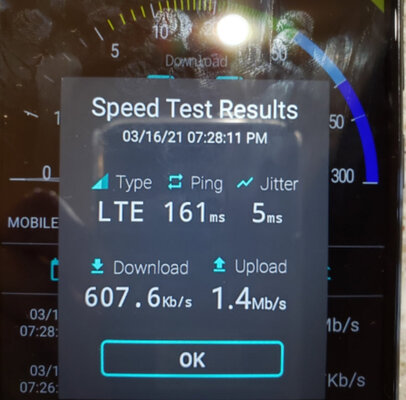jymbee
Well-known member
Two phones in the same space, one basic phone costing around a hundred bucks, the other high-end, latest greatest $1k+ phone. Would there be a noticeable difference in up/download speeed connecting to either's hotspot?
In checking out various levels phones and hotspots, one of the key features I look for is how many and which frequency bands they cover. Often the lower cost devices have fewer band capability, limiting which towers will give the best coverage or speeds.
Got it-- thanks much for the insights.The Galaxy A11 actually does have excellent band coverage, hitting all 20 bands from 1 to 71. Band 66 is the current "hot" band for Verizon, AT&T, and T-Mobile, and the A11 does cover it along with Verizon's band 2,4,5, and 13. One thing to keep in mind with Visible, is that hotspot use on the phone is limited to 5 Mbps down and up. That works fine for most streaming with one device...

Visible lifted the speed cap for the phones, but not for the hotspot feature. The newer 5G phones have a 200 Mbps cap for the hotspot feature when using a 5G connection.Visible works on the Verizon network, though has a lower data priority than native Verizon phones and hotspots. Meaning someone with a genuine Verizon phone / data plan will tend to get a faster connection when connected to the same tower. My nephew went though this, starting out with a Visible phone plan for rural data, then bought into a legacy Verizon plan reseller hotspot at a much higher monthly rate in order to gain higher download speeds. Initially Visible was capped at 5 mbps download speed, though I think that was lifted sometime in 2019.
